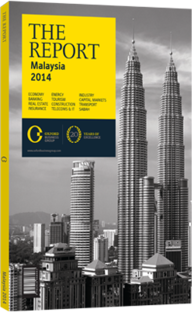OBG talks to Mohamad Salim, Group Managing Director, MRCB

Interview: Mohamad Salim
Will recent announcements in the 2014 budget have the desired effect of curbing speculation and increasing housing affordability for locals?
MOHAMAD SALIM: The announcement of the new real property gains tax, or RPGT, by the prime minister in the 2013 budget were in line with many developers’ expectations. Under the new rules, the RPGT rate will be 30% for properties sold within the first three years, 20% for properties sold in the fourth year and 15% for properties sold in the fifth year. For properties sold in the sixth and successive years, no RPGT will be imposed on buyers. The rates in 2013, prior to the 2014 budget announcements, were 15% for properties sold within the first two years, 10% for properties sold within the third and fifth years and no RPGT imposed on properties sold in the sixth and subsequent years. Increasing the rate within the first few years should help to weaken speculation and to encourage serious investors, with a longer-term view, to participate. In terms of affordability, I still believe that the Malaysian market is the most affordable in the region. If you look at other capital cities in the region, for example Jakarta and Bangkok, and compare the price per square foot with that of Malaysia, you will find that prices in the Malaysian market still have room to increase.
How do you anticipate foreign investors will interpret these changes?
SALIM: Even with the implementation of a new price floor of RM1m ($312,100) on properties in the whole of Malaysia and RM2m ($624,200) in Penang, as well as the significant changes to the RPGT, I can’t see a large exodus of foreign participation, mainly because most of the purchases from foreigners are currently above the RM1m threshold.
As mentioned in my previous response, Malaysia will still remain a popular destination for foreign property buyers because properties prices are very attractive. Another favourable selling point is that Malaysia remains the only country in South-east Asia in which a foreigner can buy freehold properties. Malaysia follows the British law in this regard.
How will developers circumvent financing issues, given new rules such as the end of the developer interest-bearing scheme (DIBS)?
SALIM: The end of the DIBS will preclude developers from including the loan interest paid during construction into the price of houses. Subsequently, financial institutions are now prohibited from financing projects involved in the DIBS. The idea behind the DIBS was to allow Malaysians that cannot afford properties to buy, as they don’t need to pay interest on their mortgages while the building is being constructed. The problem came when speculators took advantage of the DIBS. Now with the changes, the payment increases alongside the drawdown on the loan. The end of the DIBS will affect first-time homebuyers and the government will have to figure out a way to curb speculation without hurting prospective first-time buyers. For developers, while financing packages are important to attract prospective buyers, the main baseline still comes down to having a good product. If your product isn’t there, you aren’t going to sell it.
What effects will multi-modal transportation projects in and around the country’s urban areas have on property development patterns?
SALIM: Public transportation will drive property development patterns going forward. The government’s public transport initiatives, such as mass rapid transit, light rail transit and the high-speed rail linking Kuala Lumpur (KL) with Singapore, are encouraging. The transport policy plans to increase public transport participation from the current 19.6% to about 40% by 2030. If you compare KL to a city such as London, it has become quite expensive for people to travel to the city centre, making public transportation important. Considering public transportation as a part of developers’ plans will sustain developments going forward.
You have reached the limit of premium articles you can view for free.
Choose from the options below to purchase print or digital editions of our Reports. You can also purchase a website subscription giving you unlimited access to all of our Reports online for 12 months.
If you have already purchased this Report or have a website subscription, please login to continue.

